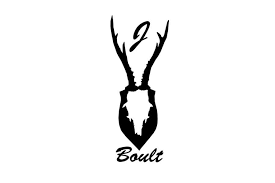In our quest to explore the realm of sustainable design, we had the privilege of sitting down with the talented designer Jamie Boult, the creative force behind J Boult Designs. Known for their commitment to upcycling, sustainability, and handmade craftsmanship, J Boult Designs' workshop is based on the remote Morvern peninsula in the Western Highlands. In this exclusive interview, Jamie Boult sheds light on their design philosophy, the importance of upcycling, and the art of creating handmade products with sustainability in mind.
Could you tell us about J Boult Designs' approach to upcycling and why it's important to you?
Jamie Boult: Upcycling lies at the core of our design philosophy at J Boult Designs. We believe that giving new life to discarded materials is not only environmentally responsible but also sparks creativity. By transforming reclaimed items into functional and aesthetically pleasing pieces, we challenge the notion that something old cannot become something new and exciting. Upcycling allows us to reduce waste, conserve resources, and create unique, one-of-a-kind designs that tell a story.
How do you integrate sustainability into the process of creating handmade products?
Jamie Boult: Handmade products offer a level of artistry and individuality that mass-produced items simply cannot match. At J Boult Designs, sustainability is not just about the materials we use but also about the manufacturing process. We strive to minimise waste and energy consumption throughout production. We carefully source materials with a low environmental impact and prioritize local suppliers to reduce transportation emissions. By creating handmade products, we can ensure attention to detail, durability, and ethical craftsmanship, thereby encouraging a more sustainable consumption culture.
What challenges do you face in upcycling and creating handmade products, and how do you overcome them?
Jamie Boult: Upcycling and handcrafting come with their unique challenges. One of the primary obstacles is sourcing materials that align with our design vision and sustainability standards. It requires dedicated research, building relationships with suppliers, and keeping an eye out for discarded treasures. Most designers start with the aesthetic of the piece, we start with the materials and what is the most sustainable method of making the product. Additionally, creating handmade products can be time-consuming, but we see it as an opportunity to invest care and passion into every piece we create. Overcoming these challenges requires a balance of patience, creativity, and a willingness to explore new avenues for materials and production methods.
How do you ensure that your upcycled and handmade designs are both functional and visually appealing?
Jamie Boult: Functionality and aesthetics go hand in hand in our design process. We believe that sustainable design should not compromise on either aspect. When we conceptualize a design, we carefully consider its intended purpose and how it will fit into people's lives. We pay attention to ergonomics, usability, and practicality while ensuring that the design is visually captivating and complements the space it inhabits. Through thoughtful craftsmanship, we create pieces that seamlessly blend functionality and beauty, enhancing both the user experience and the environment.
Through our interview with Jamie Boult, it is evident that J Boult Designs seamlessly blends creativity, craftsmanship, and environmental responsibility, showing us that sustainable design can be functional, visually appealing, and a catalyst for positive change.








